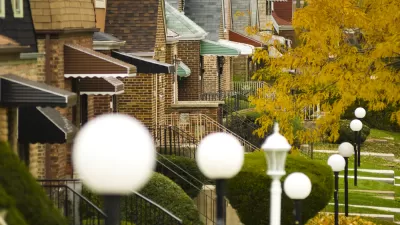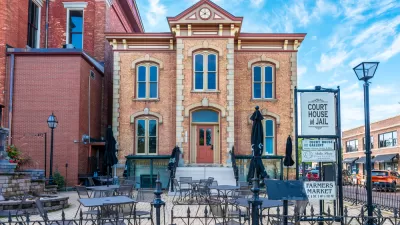Ben Austen traces how foreclosures, crime, and depopulation have decimated areas in the South and West Sides of Chicago, and the 'do-it-yourself empowerment zones' that are trying to make use of vacant properties and turn around these neighborhoods.
"As hard as the foreclosure crisis hit Chicago, its force has been felt with an unevenness that can seem fiendishly unjust. The U.S. Postal Service, which tracks these numbers, reported that 62,000 properties in Chicago were vacant at the end of last year, with two-thirds of them clustered as if to form a sinkhole in just a few black neighborhoods on the South and West Sides. Currently about 40 percent of all homeowners in these communities owe more on their mortgages than their homes are worth, and countywide 80,000 foreclosures are wending their way through circuit court."
As we've noted before, Chicago story has become a tale of two cities: the city's hottest urban center surrounded by increasingly impoverished neighborhoods.
“'We’re not like Detroit, cordoning off sections of the city,' Benet Haller, Chicago’s principal adviser for planning and design, told me. 'But we are like London or Jakarta, with a hyperdense core — a zone of affluence — and something else beyond.' What the housing crisis has revealed, in stark relief, is a Chicago that already looks increasingly like this vision of a ring city, with the moneyed elite residing within the glow of that jewel-like core and the largely ethnic poor and working-class relegated to the peripheries, the banlieues."
"The conundrum that exists in Chicago, though, is what happens to the 'something else beyond' now that the center is prospering," writes Austen. "For the people trying to make their lives in the areas that J. R. and his fellow activists are trying to save, the question is not at all a theoretical one. The way many of them see it, they’re being sacrificed so that the city can be reborn."
FULL STORY: The Death and Life of Chicago

Planetizen Federal Action Tracker
A weekly monitor of how Trump’s orders and actions are impacting planners and planning in America.

Map: Where Senate Republicans Want to Sell Your Public Lands
For public land advocates, the Senate Republicans’ proposal to sell millions of acres of public land in the West is “the biggest fight of their careers.”

Restaurant Patios Were a Pandemic Win — Why Were They so Hard to Keep?
Social distancing requirements and changes in travel patterns prompted cities to pilot new uses for street and sidewalk space. Then it got complicated.

Platform Pilsner: Vancouver Transit Agency Releases... a Beer?
TransLink will receive a portion of every sale of the four-pack.

Toronto Weighs Cheaper Transit, Parking Hikes for Major Events
Special event rates would take effect during large festivals, sports games and concerts to ‘discourage driving, manage congestion and free up space for transit.”

Berlin to Consider Car-Free Zone Larger Than Manhattan
The area bound by the 22-mile Ringbahn would still allow 12 uses of a private automobile per year per person, and several other exemptions.
Urban Design for Planners 1: Software Tools
This six-course series explores essential urban design concepts using open source software and equips planners with the tools they need to participate fully in the urban design process.
Planning for Universal Design
Learn the tools for implementing Universal Design in planning regulations.
Heyer Gruel & Associates PA
JM Goldson LLC
Custer County Colorado
City of Camden Redevelopment Agency
City of Astoria
Transportation Research & Education Center (TREC) at Portland State University
Camden Redevelopment Agency
City of Claremont
Municipality of Princeton (NJ)





























